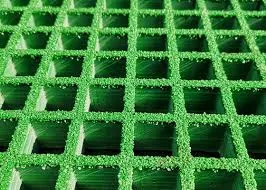
-
 Afrikaans
Afrikaans -
 Albanian
Albanian -
 Amharic
Amharic -
 Arabic
Arabic -
 Armenian
Armenian -
 Azerbaijani
Azerbaijani -
 Basque
Basque -
 Belarusian
Belarusian -
 Bengali
Bengali -
 Bosnian
Bosnian -
 Bulgarian
Bulgarian -
 Catalan
Catalan -
 Cebuano
Cebuano -
 China
China -
 China (Taiwan)
China (Taiwan) -
 Corsican
Corsican -
 Croatian
Croatian -
 Czech
Czech -
 Danish
Danish -
 Dutch
Dutch -
 English
English -
 Esperanto
Esperanto -
 Estonian
Estonian -
 Finnish
Finnish -
 French
French -
 Frisian
Frisian -
 Galician
Galician -
 Georgian
Georgian -
 German
German -
 Greek
Greek -
 Gujarati
Gujarati -
 Haitian Creole
Haitian Creole -
 hausa
hausa -
 hawaiian
hawaiian -
 Hebrew
Hebrew -
 Hindi
Hindi -
 Miao
Miao -
 Hungarian
Hungarian -
 Icelandic
Icelandic -
 igbo
igbo -
 Indonesian
Indonesian -
 irish
irish -
 Italian
Italian -
 Japanese
Japanese -
 Javanese
Javanese -
 Kannada
Kannada -
 kazakh
kazakh -
 Khmer
Khmer -
 Rwandese
Rwandese -
 Korean
Korean -
 Kurdish
Kurdish -
 Kyrgyz
Kyrgyz -
 Lao
Lao -
 Latin
Latin -
 Latvian
Latvian -
 Lithuanian
Lithuanian -
 Luxembourgish
Luxembourgish -
 Macedonian
Macedonian -
 Malgashi
Malgashi -
 Malay
Malay -
 Malayalam
Malayalam -
 Maltese
Maltese -
 Maori
Maori -
 Marathi
Marathi -
 Mongolian
Mongolian -
 Myanmar
Myanmar -
 Nepali
Nepali -
 Norwegian
Norwegian -
 Norwegian
Norwegian -
 Occitan
Occitan -
 Pashto
Pashto -
 Persian
Persian -
 Polish
Polish -
 Portuguese
Portuguese -
 Punjabi
Punjabi -
 Romanian
Romanian -
 Russian
Russian -
 Samoan
Samoan -
 Scottish Gaelic
Scottish Gaelic -
 Serbian
Serbian -
 Sesotho
Sesotho -
 Shona
Shona -
 Sindhi
Sindhi -
 Sinhala
Sinhala -
 Slovak
Slovak -
 Slovenian
Slovenian -
 Somali
Somali -
 Spanish
Spanish -
 Sundanese
Sundanese -
 Swahili
Swahili -
 Swedish
Swedish -
 Tagalog
Tagalog -
 Tajik
Tajik -
 Tamil
Tamil -
 Tatar
Tatar -
 Telugu
Telugu -
 Thai
Thai -
 Turkish
Turkish -
 Turkmen
Turkmen -
 Ukrainian
Ukrainian -
 Urdu
Urdu -
 Uighur
Uighur -
 Uzbek
Uzbek -
 Vietnamese
Vietnamese -
 Welsh
Welsh -
 Bantu
Bantu -
 Yiddish
Yiddish -
 Yoruba
Yoruba -
 Zulu
Zulu
Exploring the Impact of Mold on Health and Environment
Mold is not merely a byproduct of damp environments; it is a fascinating organism that plays a significant role in ecosystems, industry, and even human health. Belonging to the kingdom Fungi, molds are multicellular fungi comprising numerous types and species. From the ubiquitous Penicillium, which led to the discovery of antibiotics, to the black mold (Stachybotrys chartarum) that thrives in water-damaged buildings, molds exhibit incredible diversity and adaptability.
In nature, molds contribute to the decomposition of organic matter. They break down dead plants and animals, recycling nutrients back into the soil. This nutrient cycling is crucial for maintaining healthy ecosystems and supporting plant growth. Molds also form symbiotic relationships with other organisms. For instance, mycorrhizal fungi, including some molds, interact with plant roots to enhance nutrient absorption in exchange for carbohydrates. This partnership illustrates the intricate web of life where molds are often unsung heroes.
However, molds can also pose risks, particularly in indoor environments. When mold spores land in damp areas, they can proliferate, leading to potential health issues for inhabitants. Exposure to mold can trigger allergic reactions, respiratory problems, and even more severe health complications in sensitive individuals or those with compromised immune systems. It is essential for homeowners to mitigate indoor moisture and ensure proper ventilation to prevent mold growth.
mold

In the culinary world, molds are utilized for their unique properties. Certain cheeses, like Roquefort and Brie, owe their distinct flavors to specific mold strains. These molds not only enhance taste but also contribute to the texture and aroma, showcasing how molds can be beneficial in the right context.
Additionally, the industrial applications of molds are expanding. In biotechnology, they are harnessed for fermentation processes, producing essential products such as enzymes, organic acids, and alcohol. Moreover, research is ongoing into mold-based bioplastics and myco-remediation techniques to treat contaminated environments.
Ultimately, molds embody a dual nature while they are vital for ecological balance and industrial advancements, they can also pose challenges in human habitats. Recognizing their importance allows us to appreciate these organisms not just as nuisances but as essential components of life on Earth. Through respect and understanding, we can harness the beneficial aspects of molds while mitigating the risks they present.
Latest news
-
Exploring the Benefits of Top Hammer Drifter Rods for Enhanced Drilling PerformanceNewsJun.10,2025
-
High-Precision Fiberglass Winding Machine for GRP/FRP Pipe Production – Reliable & Efficient SolutionsNewsJun.10,2025
-
FRP Pipes & Fittings for Shipbuilding - Corrosion-Resistant & LightweightNewsJun.09,2025
-
Premium FRP Flooring Solutions Durable & Slip-ResistantNewsJun.09,2025
-
Premium Fiberglass Rectangular Tanks Durable & Lightweight SolutionNewsJun.09,2025
-
Tapered Drill String Design Guide Durable Performance & UsesNewsJun.09,2025









